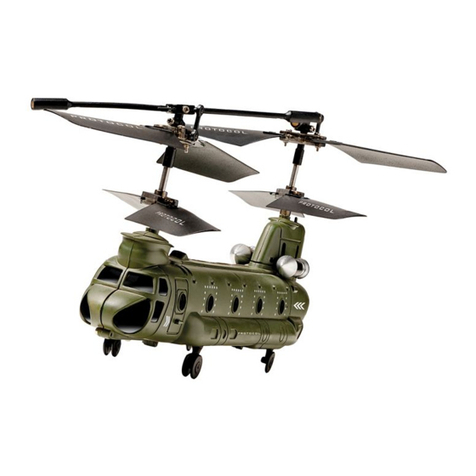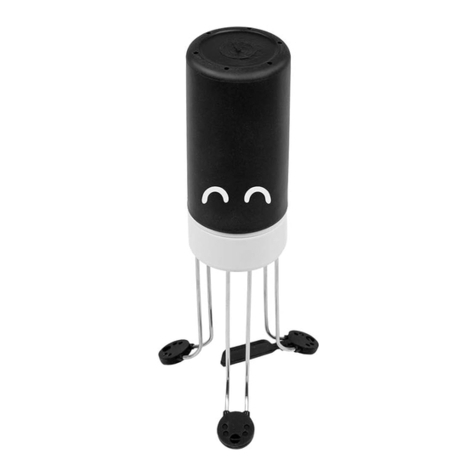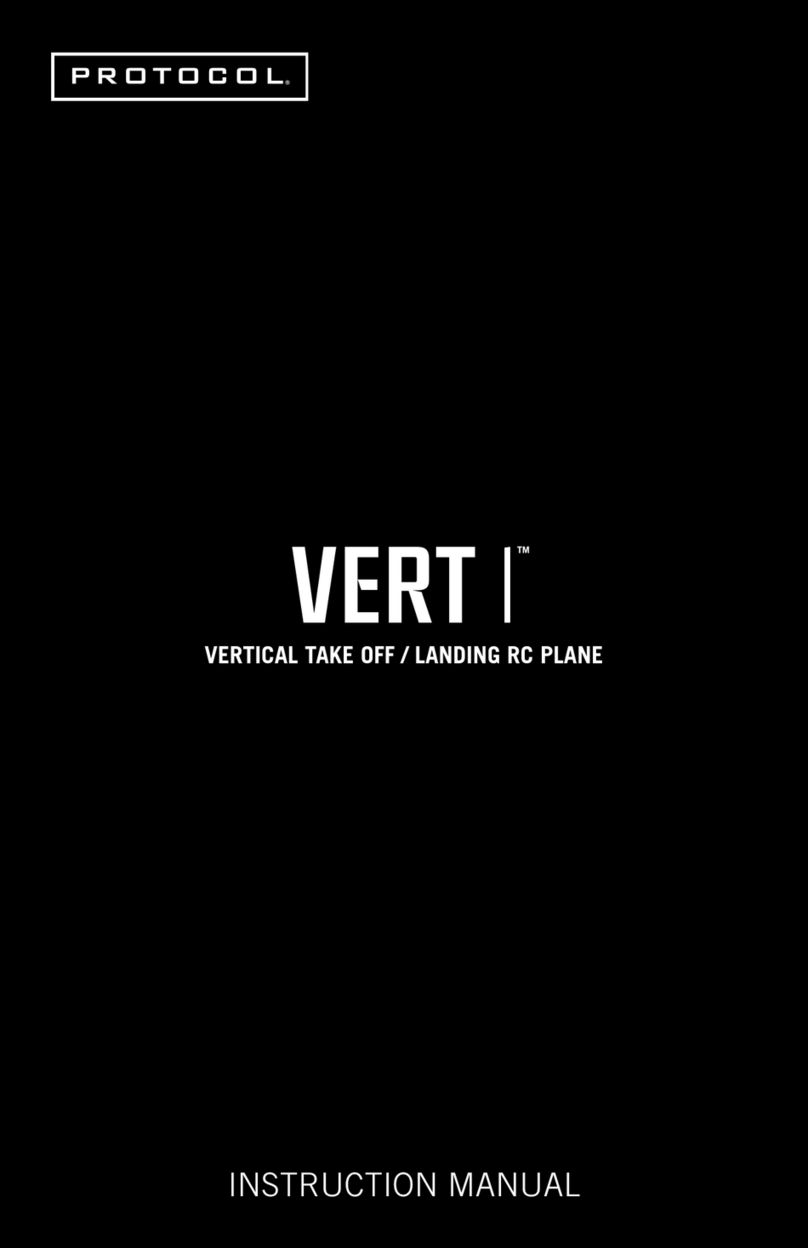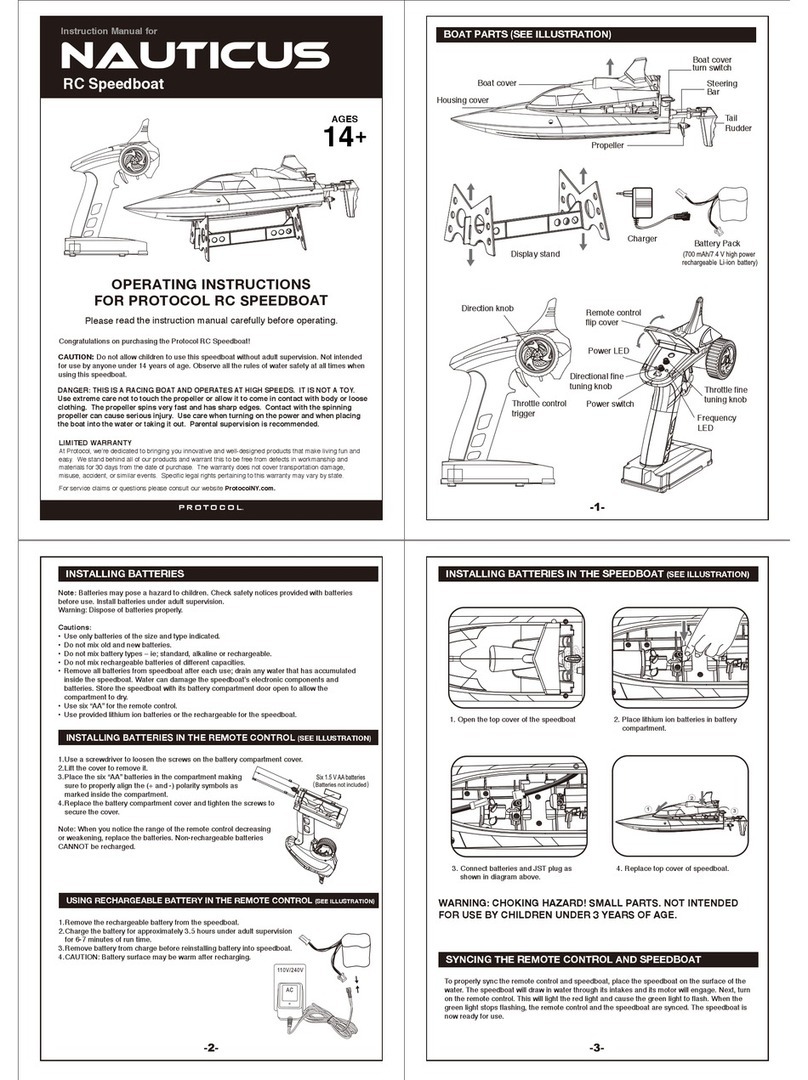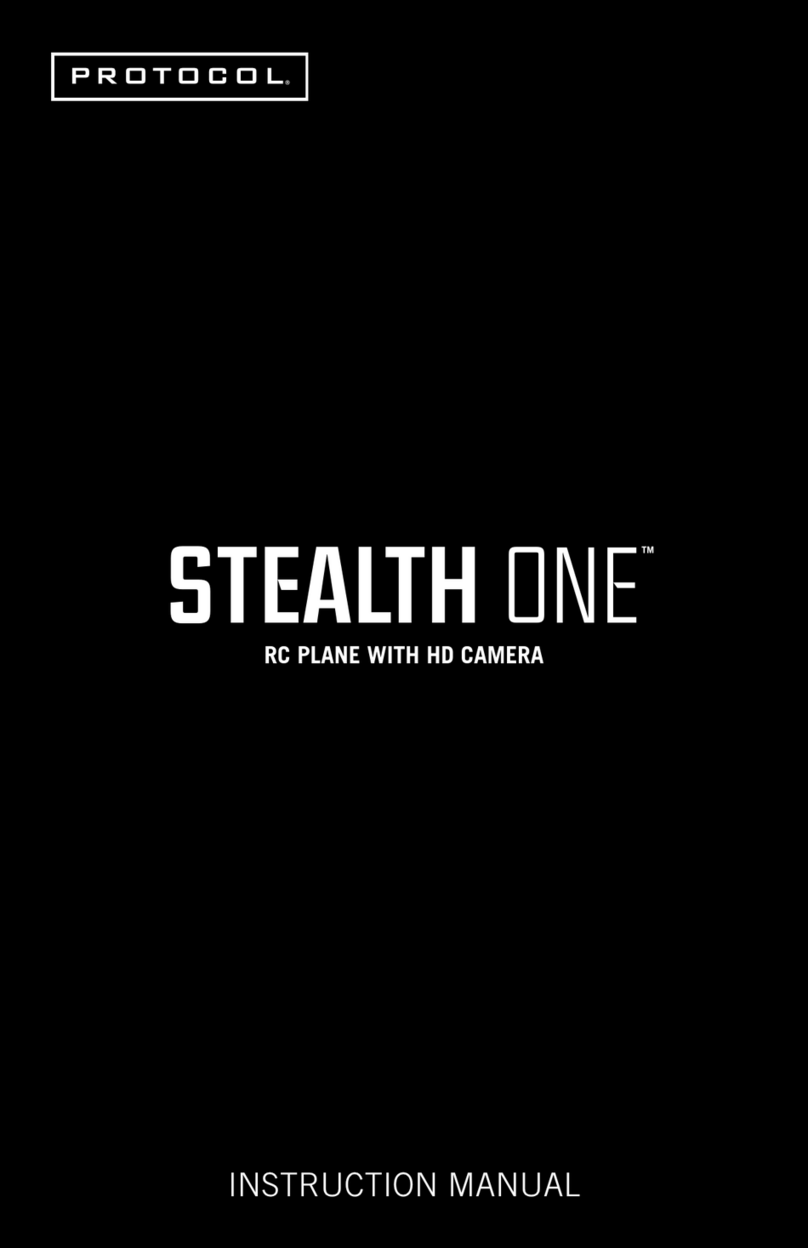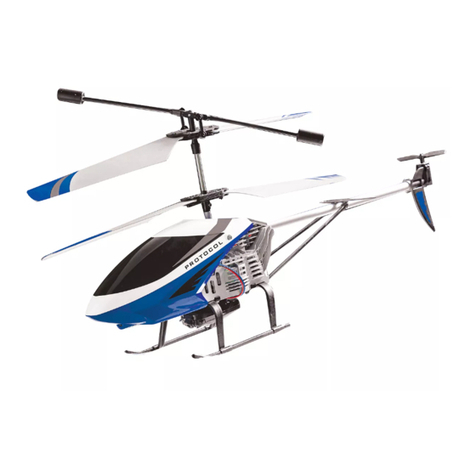
REMOTE BATTERY INSTALLATION CHARGING THE HELICOPTER BATTERY
1. Turn the transmitter on.
2. The cover to the charging wire is located on the back of the remote on the
lower left side.
3. Connect the USB charging cable located inside of the remote to the battery
to the charging slot on the helicopter.
4. The transmitter light will change to red to indicate the helicopter is charging
and will turn back to blue once charged.
Charging time: approximately 60 minutes --- Flying time: approximately 6 minutes
CAUTION WHEN CHARGING
1. When charging, place product on a dry, well-ventilated surface and keep
away from heat sources.
2. Always use adult supervision while charging.
3. In order to increase battery longevity, avoid repeat charging and excessive
discharging.
4. As battery temperature is high immediately after flight, charge after cooling
down for higher efficiency.
5. Do not strike or subject battery to hard impacts or sharp surfaces.
6. Do not use any other charger than that which is supplied with this item.
7. Do not use or leave battery near a heat source such as fire or space heater;
exposure to heat may result in reduced performance or in some cases
dangerous conditions.
8. If battery is left in charging state for an extended period of time after being
fully charged, the battery may automatically discharge.
9. Never leave the battery unattended during charging.
10. Do not disassemble battery.
11. Do not submerge battery in water.
DO NOT CHARGE OVERNIGHT OR BEYOND THE CHARGING TIME STATED.
DO NOT LEAVE HELICOPTER UNATTENDED WHILE CHARGING.
*Battery: Li-Po, 3.7V, 100mAh
5
* Low Battery Signal:
The lights on the helicopter
will begin to flash in flight
to indicate low battery.






